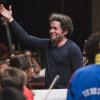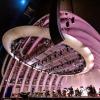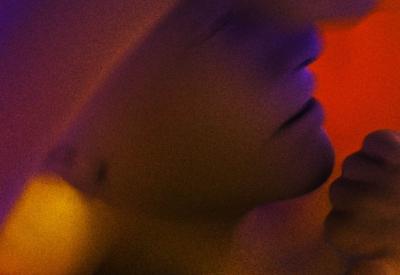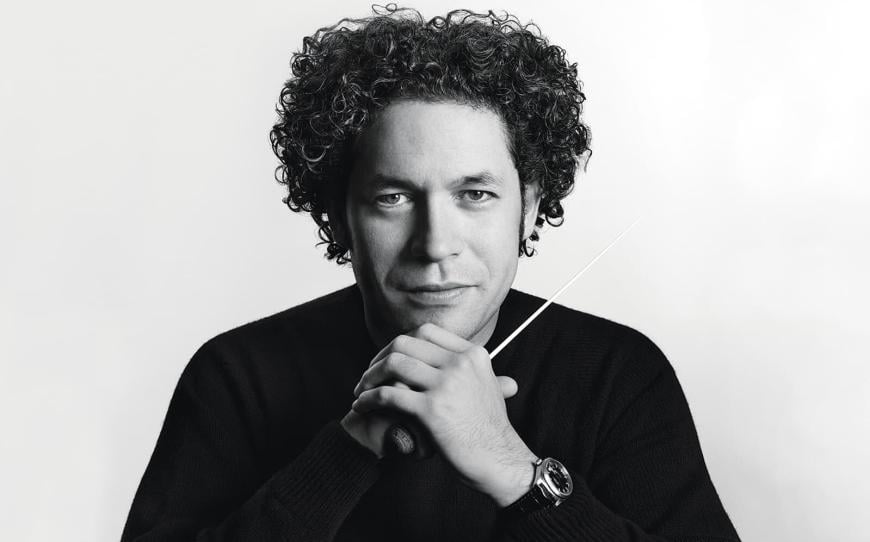
San Francisco Symphony audiences have heard numerous great Mahler performances over the last few decades, largely owing to the long tenure of Music Director Laureate Michael Tilson Thomas. Returning to SFS for the first time since 2008, Gustavo Dudamel, music and artistic director of the Los Angeles Philharmonic, gave an erratic reading of Mahler’s gargantuan Symphony No. 5, paired with a performance of Mozart’s “Prague” Symphony, No. 38, K. 504, that was plagued with the same issues as the Mahler.
The Mahler certainly had some fine moments, but most of them came from the principal instrumentalists and the excellence of the orchestra as an ensemble. Principal trumpet Mark Inouye led the way brilliantly in the piercing solos of the opening “Trauermarsch” (Funeral march), while Robert Ward played the Scherzo’s treacherous horn solo flawlessly, with both power and wit. As a group, the brass could not be faulted, particularly in the second and fifth movements. In the Adagietto, harpist Meredith Clark played with heart-stopping tenderness.
Dudamel conducted with considerable energy, but too often this was expressed through speed and volume. The first movement launched in ear-splitting fashion, with double fortes landing as if the score called for “as much volume as possible.” Though Mahler asks for plenty of piano and pianissimo playing, the movement never got much quieter than mezzo-forte. The second, third, and fifth movements intermittently suffered from the same limited dynamic range, ranging from mezzo-forte to much too loud. Maybe Dudamel can get away with this in the magnificent acoustics of L.A.’s Walt Disney Concert Hall, but Davies doesn’t tolerate sonic overload very well, and the orchestral sound was too blaring, too often.
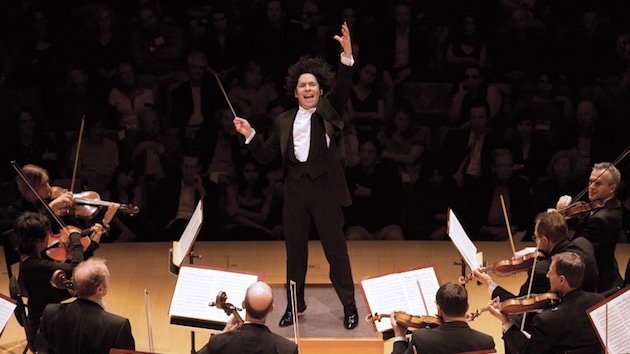
The conductor didn’t always have full control of the orchestra. The opening of the Scherzo wasn’t well coordinated, and the slow section nearly fell apart at the beginning. But the Scherzo also brought perhaps the most breathtakingly beautiful passages of the evening’s performance, in the slow section where the pizzicato strings take center stage.
The Adagietto lacked sinew and a sense of the underlying structure of the movement and seemed not just slow, but laggard. This was an issue for the entire work: Dudamel seemed to be conducting moment by moment, without illuminating the larger structure of each movement and the symphony as a whole. While his conducting wasn’t metronomic, he lacked an organic sense of the underlying pulse of each movement and thus lacked the kind of graceful rhythmic flexibility within a phrase that good Mahler conducting needs. And he too often overlooked subtle dynamic changes as well.
He had similar issues with the opening Mozart, despite its straightforward organization and clarity. Balances within the woodwinds were off, and the strings sounded mechanical and overly regimented. The symphony lacked crispness and phrases were dully articulated.
Dudamel received a hero’s welcome when he first came onstage, and at the close of the concert, the audience gave him a standing ovation. I might have been the only person at Davies who was disappointed.


